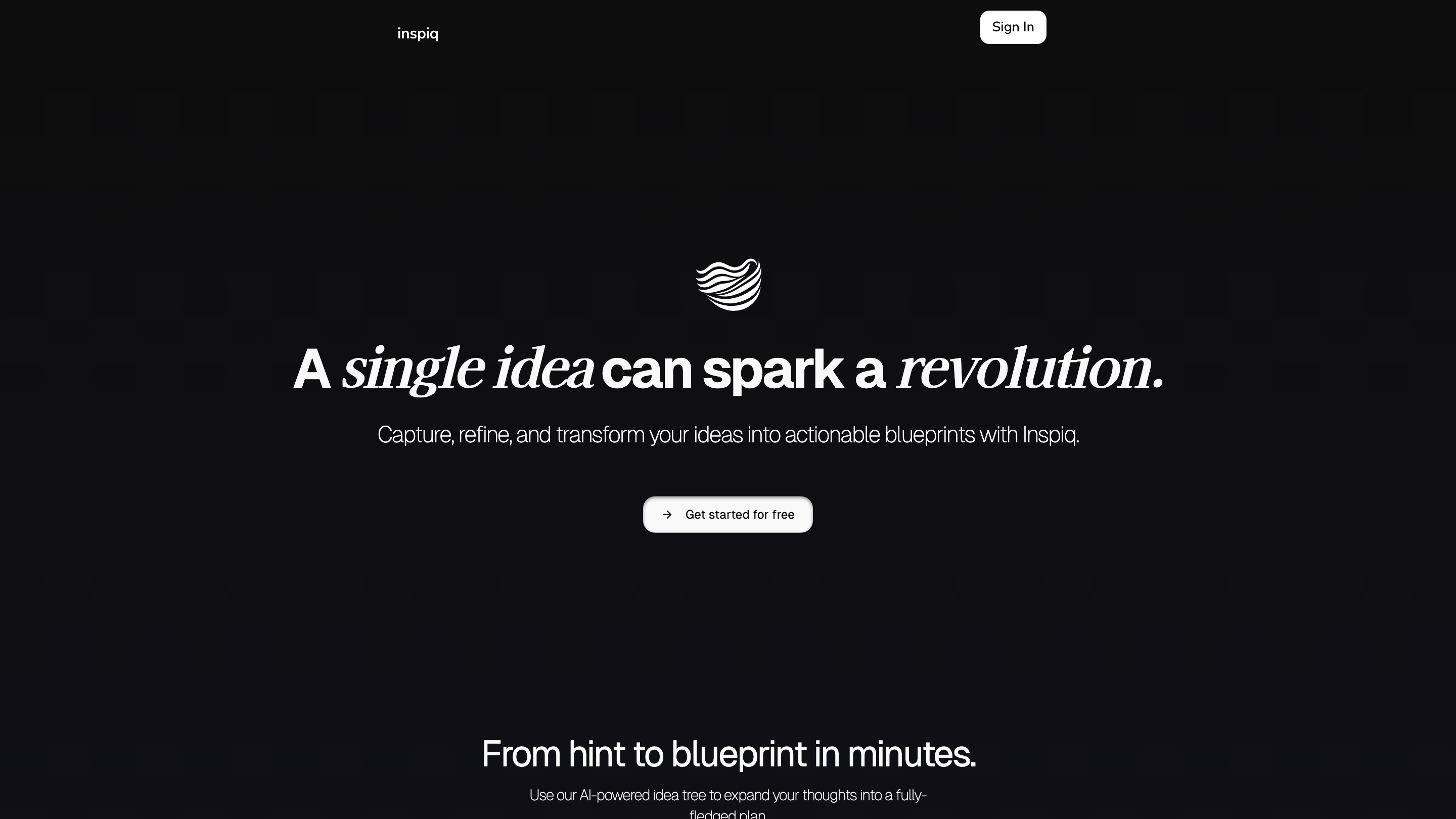Ideator
Open siteArt & Creative Design
Introduction
Brainstorming tool for designers & innovators
Ideator Product Information
Ideator AI for designers & innovators is an AI-powered ideation and design facilitation tool tailored for designers, innovators, and product teams. It focuses on generating and iterating ideas for features, interactions, and experiences while preserving the core objective of a given design or interaction. The platform emphasizes exploration of different variations (iterations) of a feature or interaction, offering modes to balance creativity and practicality across ideation sessions.
Key concepts and capabilities
- Iterations: Create multiple variations of a feature or interaction while keeping the main purpose intact. This helps explore different approaches, UX flows, and interaction models without drifting away from the core goal.
- Creativity level: Users can choose among Traditional, Balanced, Innovative, and Wild to steer the novelty and risk level of generated ideas.
- Input-driven ideas: Start by entering a prompt or starting concept in the first block to seed ideas.
- Awaiting input: The system is designed to generate ideas once the user provides an initial prompt, enabling an interactive ideation loop.
- Pinning ideas (COMING SOON): A future feature to pin and curate the most valuable generated ideas for later reference.
- Design for AI / Augment with AI: Emphasis on integrating AI into design practice from a designer’s perspective, exploring how AI can augment UX and concept development.
- Experiments: The tool exposes the design and AI experimentation mindset, including live experiments and explorations.
- Accessibility and contact: The project is showcased at aiverse.design, with a contact address for queries ([email protected]).
- Tech basis: The web application runs on GPT-4, leveraging AI capabilities to generate and iterate design ideas.
- Concept inspiration: Design and concept are inspired by TextFX by Google, aiming to spark a similar utility for designers and innovators.
How to use Ideator AI
- Enter an initial prompt or concept in the first input block.
- Choose a desired creativity level (Traditional, Balanced, Innovative, Wild).
- Generate ideas and review different iterations that preserve the main job of the feature or interaction.
- (Coming soon) Pin your favorite ideas for quick access and organized planning.
- Iterate by refining prompts or selecting different creativity levels to explore alternate directions.
Design philosophy and scope
- The tool targets the ideation phase of design and innovation, helping teams brainstorm, compare variations, and align on concepts before prototyping.
- It emphasizes keeping the core objective intact while exploring diverse interaction patterns and feature variations.
- It supports designers and innovators in thinking through UX, product interactions, and AI-assisted design augmentation.
How It Works
- Provide an initial prompt describing the feature, interaction, or concept you want to explore.
- The system generates multiple iterations with distinct approaches while maintaining the core purpose.
- Users can select and refine promising ideas to shape the next design steps.
Safety and Ethical Considerations
- Ideation tools should be used to explore ideas responsibly and avoid misrepresentations or harmful applications. Users should validate and iterate with human oversight before implementing designs in real products.
Core Features
- Iteration-based idea generation: Create multiple variations of a feature or interaction while preserving core goals
- Adjustable creativity levels: Traditional, Balanced, Innovative, Wild to control novelty and risk
- Prompt-driven ideation: Start sessions by entering a seed concept or prompt
- Awaiting input flow: The system begins generating ideas once input is provided
- Coming soon: Pinning of generated ideas for quick reference and organization
- AI-assisted design augmentation: Explore how AI can augment UX, concept development, and design workflows
- Experimental mindset: Encourages design experimentation and exploration with AI
- Designer-centric perspective: Built for UX designers and product innovators
